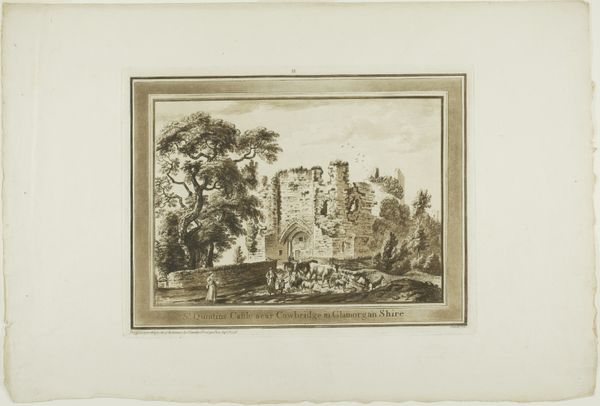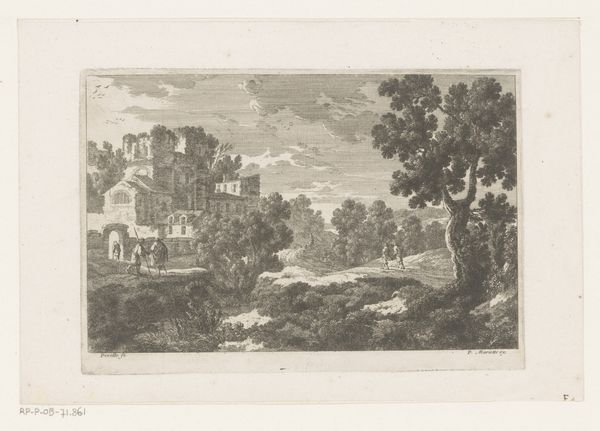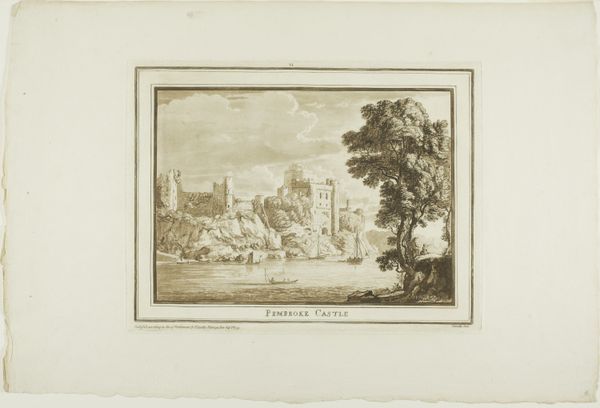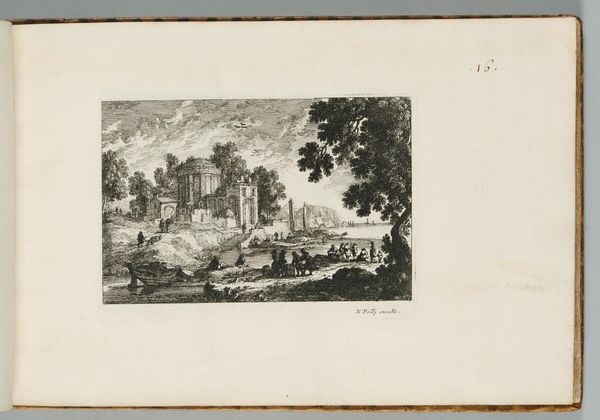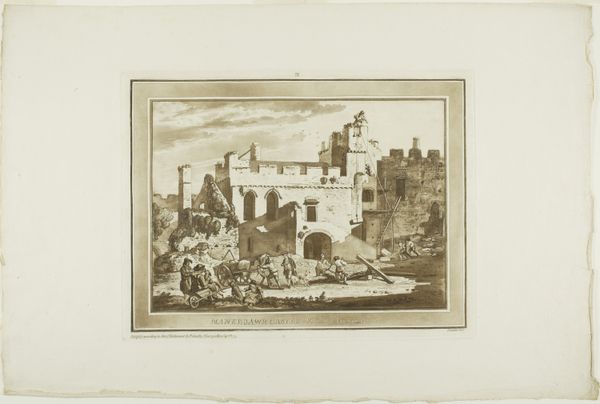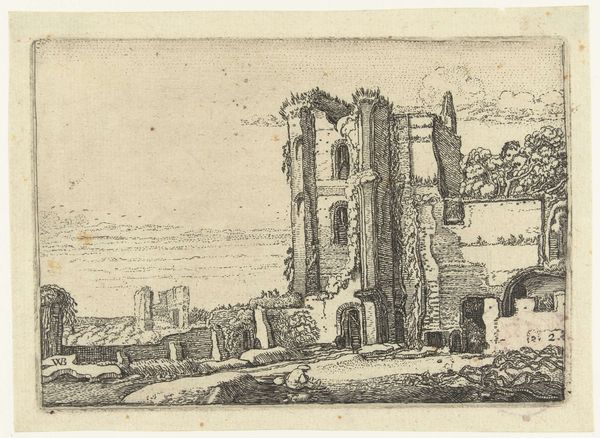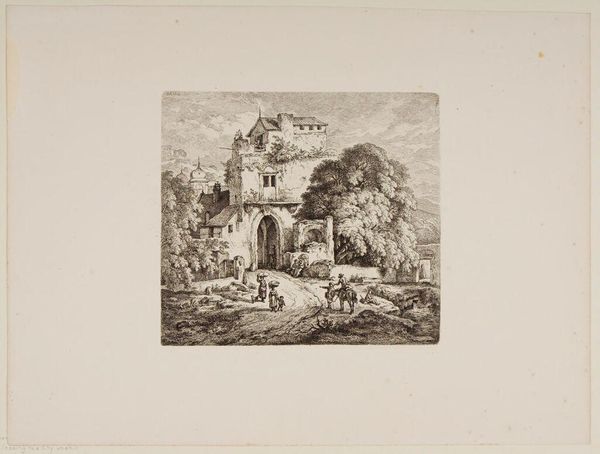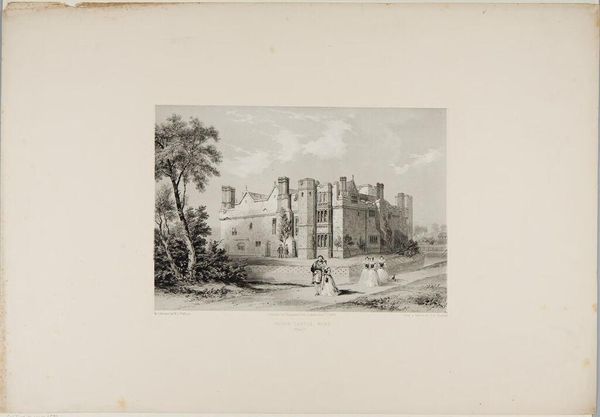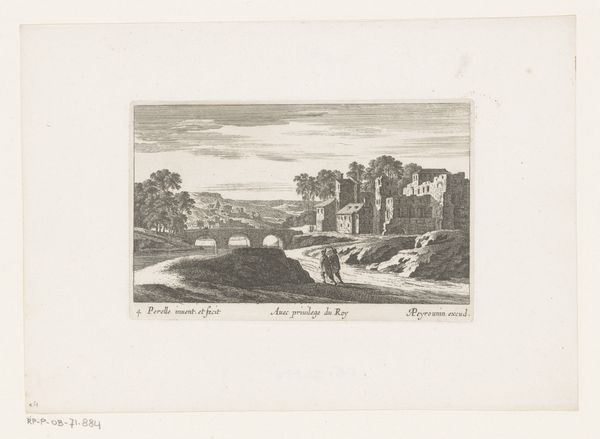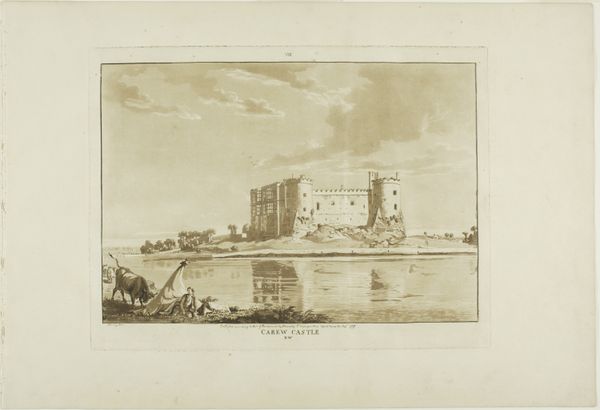
The South Gate of Cardiff Castle in Glamorgan Shire, from Twelve Views in Aquatint from Drawings taken on the Spot in South Wales 1773 - 1775
0:00
0:00
drawing, print, etching, paper
#
drawing
# print
#
etching
#
landscape
#
paper
#
watercolor
#
realism
Dimensions: 186 × 261 mm (image); 225 × 303 mm (plate); 351 × 530 mm (sheet)
Copyright: Public Domain
Paul Sandby made this print of The South Gate of Cardiff Castle using aquatint, a printmaking technique that simulates the broad washes of watercolor. Aquatint involves the careful layering of tones to create an image, and this print exemplifies the nuanced effects achievable through the process. Look closely and you’ll notice subtle gradations of light and shadow across the stone walls and the tranquil water in the foreground. The texture results from the manipulation of resin or similar materials on a metal plate, which is then etched with acid. The longer the plate is exposed to the acid, the deeper the grooves and the darker the tones appear in the print. The aquatint printmaking process lent itself well to the picturesque aesthetic then in vogue. By embracing the materiality of printmaking, Sandby elevated a method often considered a ‘lesser’ art form, using it to capture the grandeur and atmosphere of the Welsh landscape.
Comments
No comments
Be the first to comment and join the conversation on the ultimate creative platform.
